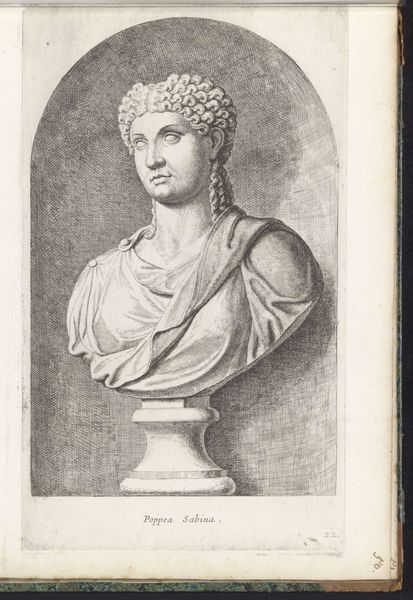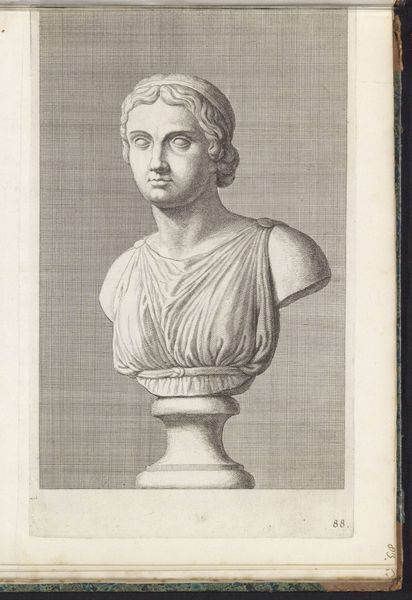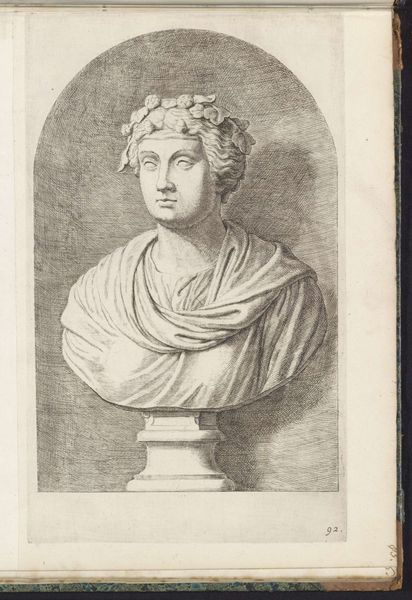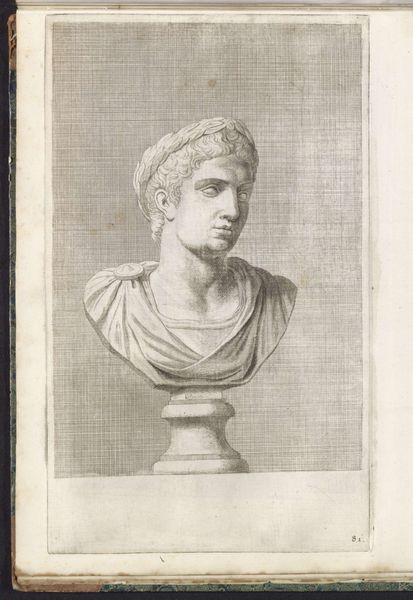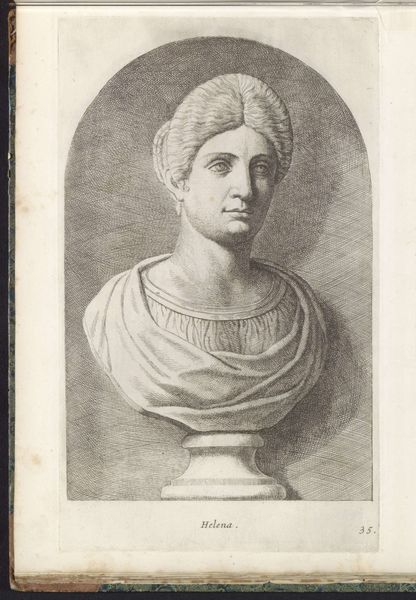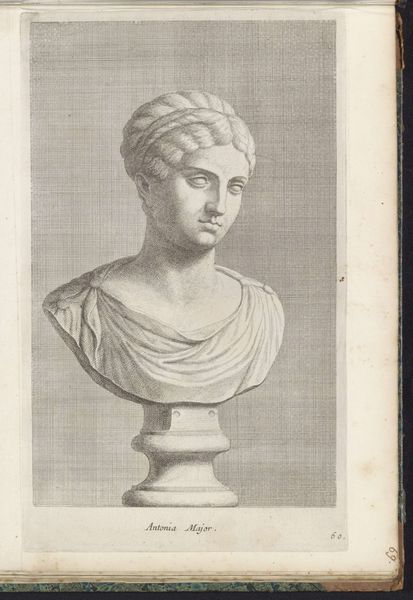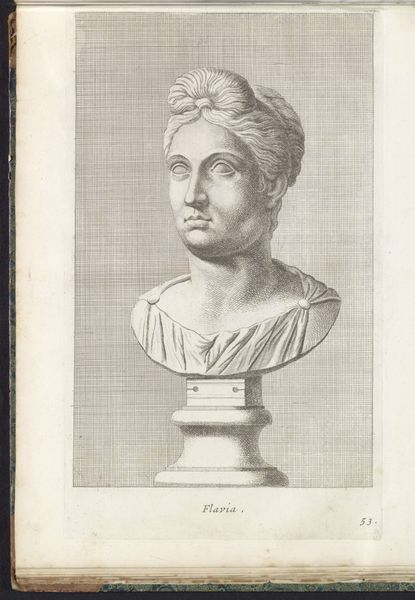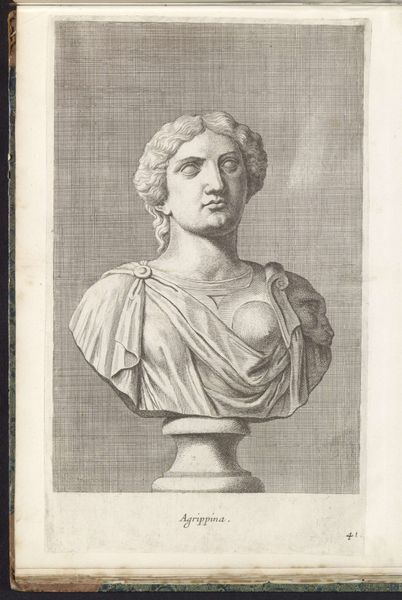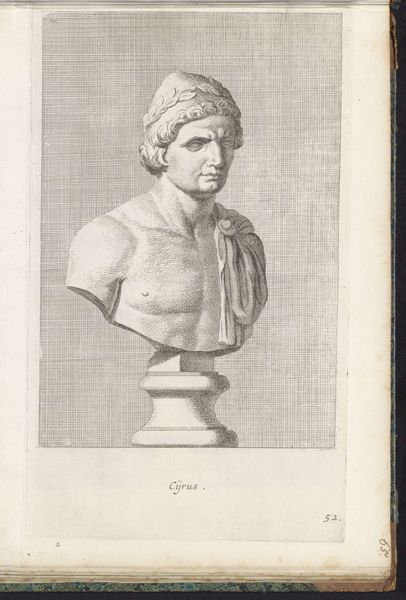
sculpture, engraving
#
portrait
#
baroque
#
greek-and-roman-art
#
figuration
#
form
#
ancient-mediterranean
#
sculpture
#
line
#
engraving
Dimensions: height 325 mm, width 194 mm
Copyright: Rijks Museum: Open Domain
Curator: Welcome. Here we have an engraving created between 1646 and 1670 by Hubert Quellinus titled, “Buste van de godin Cybele.” Editor: My first impression is one of stoic serenity. The subject’s gaze is steady, and the details are rendered with such fine precision; it’s quite impressive. Curator: Absolutely. The precise hatching and cross-hatching exemplify the printmaker’s careful control of line to model form. Consider the way light is used to sculpt the curves of the face and the drapery; it demonstrates a keen understanding of classical aesthetics and Baroque sensibilities. Editor: Baroque, certainly, in its theatrical flair. This engraving represents Cybele, the Phrygian goddess of fertility and the earth’s abundance. We must understand her worship originated in Anatolia well before its integration into the Greco-Roman pantheon. It’s about reclaiming power. Curator: Quite right, the image presents the viewer with a sense of restrained grandeur that suits her status as a goddess. The rigid structure of the bust, from its pedestal to the headdress, lends a powerful sense of balance to the piece. Editor: It's crucial to examine Cybele’s narratives beyond idealized beauty. As the "Great Mother," she embodies complexities in maternal identity, linked to both creation and potent, even fearsome, forces. The goddess’s worshippers enacted transformative rituals of mourning and rebirth centered on the cyclical rhythm of nature. Curator: True, and how those stories, the very themes and ideas they embody, influenced artists of the Baroque period is very fascinating. I'm drawn to the way the artist conveys volume through such economical means— it’s a tour de force of engraving. Editor: What this piece evokes for me, ultimately, is not merely an echo of antiquity, but the persistent presence of archetypes and the ongoing relevance of deities long perceived as outside the canon of Western history. Curator: Precisely, understanding how classical form is mediated, refined, and reinterpreted to accommodate various ideas about cultural and social hierarchies provides valuable insight into its allure. Editor: Agreed. Exploring historical pieces like this always leaves me contemplative about society, representation, and our connections to the distant past.
Comments
No comments
Be the first to comment and join the conversation on the ultimate creative platform.
